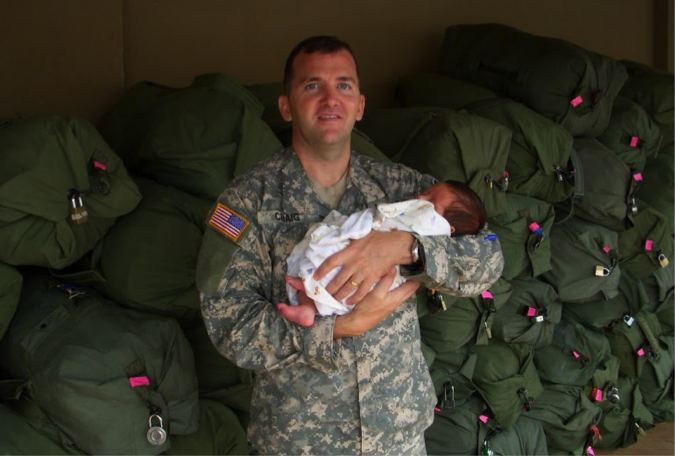Post-Traumatic Growth: How Combat Made Me and Other Veterans Better People

I joined the Army in 1993 at a time when our toughest deployments were one-month exercises in Louisiana or central California. My peace-time focus was training, training, and more training. Real combat was more abstraction than reality. I had recently completed command of an infantry company when the attacks of 9/11 happened. When we invaded Iraq, I was in Army-funded graduate school.
It was not until Dec. 7, 2007, ten years ago today, that I first left for a combat deployment. It was my own personal “date which will live in infamy.” That morning was unseasonably cool and misty for Schofield Barracks in Hawaii. I kissed my wife of three years and my five-week old firstborn son and boarded the bus that started my journey to Iraq as the executive officer of a Stryker infantry battalion.
I remember feeling shame — like I had chosen my career over my family. I married the strongest woman I had ever met, but leaving her alone with a new baby and thousands of miles from family felt unfair — she didn’t sign up for that. I was also anxious, even fearful. How would I react to combat? Would I lead well? Would I make good decisions? Would we accomplish our mission? Could I bring all of my soldiers home from Baghdad?
In spite of this early shame and fear, my deployment changed me for the better in almost every way.
The challenge of combat leadership was extraordinary. It was physically, mentally, and emotionally exhausting. It was dirty, bloody, and heart-wrenching. But it was also magnificent. It was exhilarating, funny and, dare I say, it was loving. I loved the soldiers — men and women — with whom I served and I love them still today. My war experience was transcendent, and I changed.
You see, despite what you hear, veterans don’t always end up disordered from their experiences. From what I have seen, more often than not, veterans grow stronger after their struggles. They experience post-traumatic growth. I did.
At home, my family grew stronger too. My wife struggled with her own job and a firstborn who was prone to ear infections and fevers. We spoke as often as we could on a scratchy USO line, but of course, it wasn’t nearly enough. She was alone for two birthdays and two Christmases, yet she persevered. I returned home after 15 months to a walking, talking boy and a marriage that had been strengthened by sacrifice on both sides.

My experience is not unique. The latest employment numbers show that veterans are actually more employed than their civilian counterparts. Veterans volunteer more hours, vote more often, and give more money to charity than their non-veteran peers. These are clear indications of growth, not decay.
Post-traumatic growth is a theory that has quietly gained acceptance in psychology, social work, and even in business over the last decade, but for whatever reason it has not made the leap to popular culture. It can’t seem to compete with PTSD.
On the campus where I now teach, I deal with veterans every day. I am constantly amazed by their strength and resilience — from the young veteran who started out feeling lost, but ended up connecting to an academic department and graduating with honors to the quarter of our veteran students who are women and who succeed at rates far ahead of their representation in service. Each has struggled, each has learned, and each is growing. Post-traumatic growth is real and it is the norm, not the outlier.
Yes, there are some who need help. Their struggles are legitimate and the challenges are significant. For these veterans a connection to services (From the Department of Veterans Affairs, a veterans service organization, or elsewhere) is critical. So is a connection to regular people who can support, care, and listen. To paint all veterans with a PTSD brush is a mistake. Even those with PTSD can grow.
As I think back on my deployment, I am grateful for the experience, but not unreservedly. Yes, I led well and I made good decisions. Still, I did not bring every soldier home. I regret that. I feel guilt that some of my orders led to casualties in our ranks, but I also feel great pride in the accomplishments we achieved together. I am confident that my leadership led to more lives saved than taken.
The trauma of separation and combat opened a space for me to become stronger, more thoughtful, more loving and more connected. That space was filled with real connections and with support of my family and my community.
Veterans and their families may be changed, but don’t assume they are broken. If you know a veteran, or if you meet a veteran, connect to that person. Ask about their experiences — I bet you will find there is a story of post-traumatic growth to tell.
Jim Craig is an Associate Teaching Professor at University of Missouri-St. Louis. He retired from the Army in 2013.
Image: Courtesy of author

